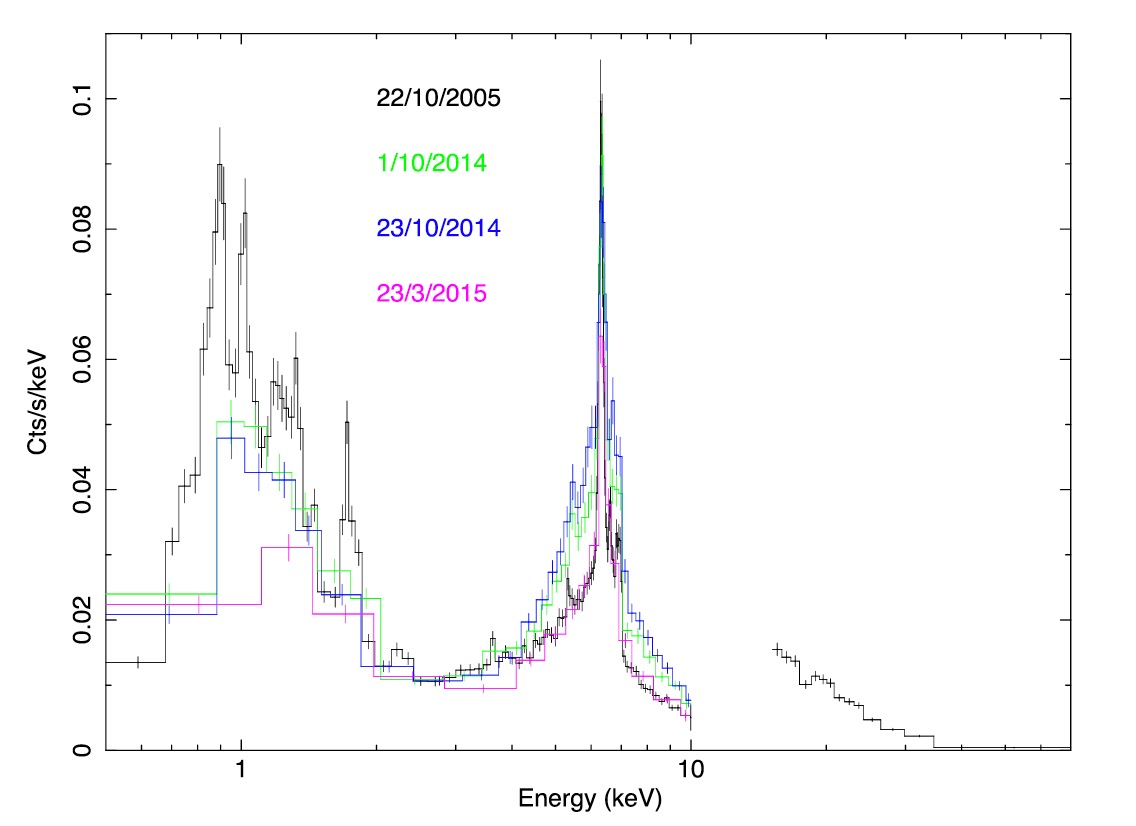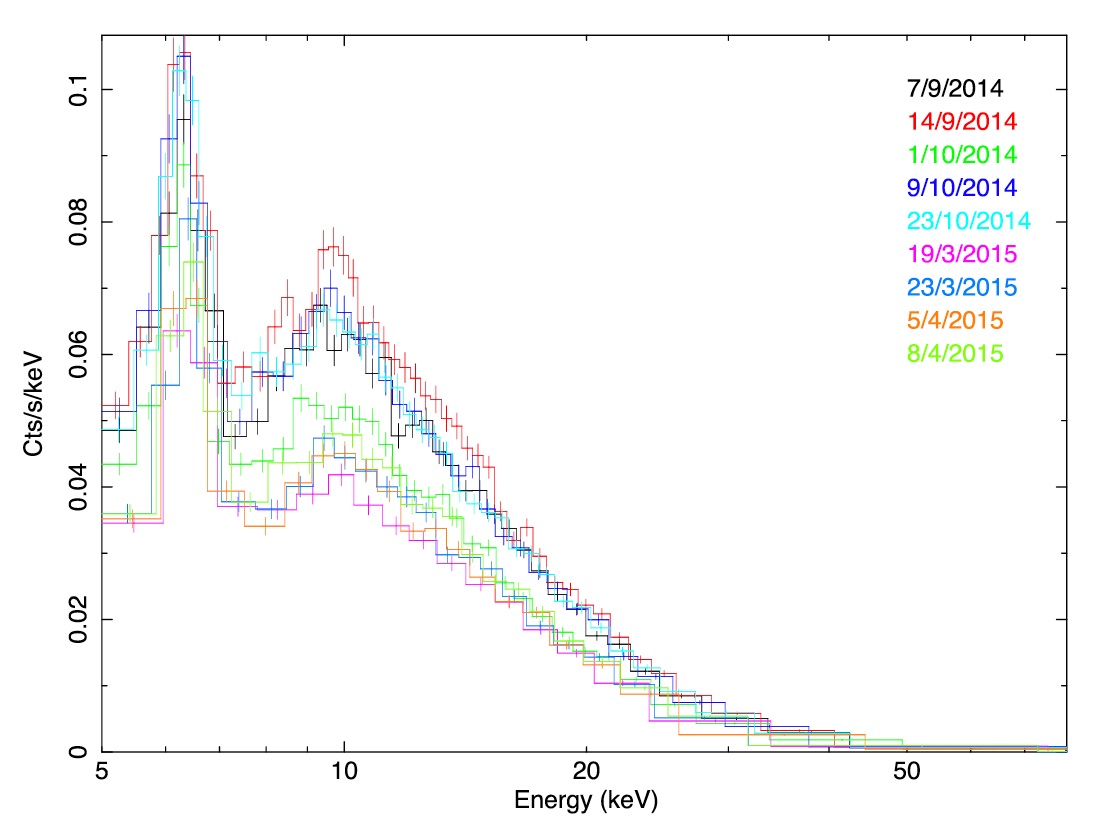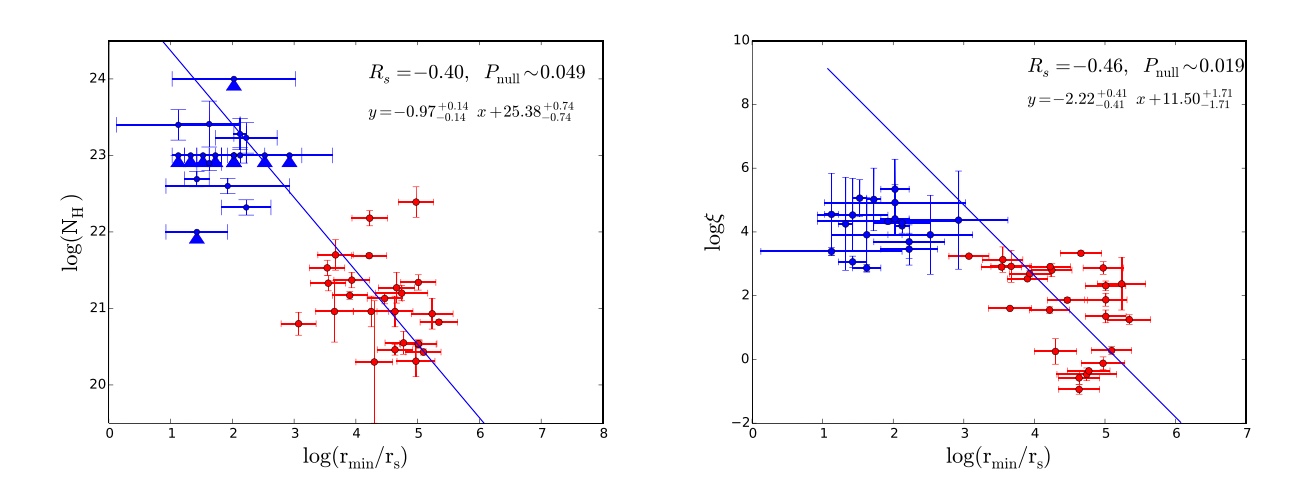High Energy Astrophysics - Space Science Faculty
High Energy Astrophysics
High Energy Astrophysics at ESTEC | High Energy Accretion at ESAC
- Removed a total of (2) style text-align:center;
High Energy astrophysics at ESTEC
X-rays and gamma-rays are a privileged band to study accretion onto compact objects (black holes, neutron stars, white dwarfs) and their environment. Research activities in this field at ESTEC focus on the physics of outflows produced in the innermost regions of Active Galactic Nuclei (AGN), the physics and the geometry of matter surrounding them (possible repository of the black hole feeding), as well as the accretion physics of matter from a donor star onto a stellar-mass compact object (black hole, neutron star, white dwarfs). Other areas include gamma-ray bursts as their (potential) electromagnetic counterparts of gravitational wave emitters. ESA's satellites study accretion physics and gamma-ray bursts over a broad range of wavelengths, from infrared to optical, and in particular using X-rays detected by XMM-Newton and INTEGRAL.
The ESTEC researchers collaborate intensively with the AGN Group and the High-Energy Accretion Working Group at ESAC.
A list of publications on refereed journals of the group is available here.
Accretion onto stellar-mass compact objects: black holes, neutron stars and white dwarfs
Accretion powers the strong X-ray emission from compact objects in binary systems. In many of these systems there are evidences that the accretion process is mediated by an accretion disk. Binaries in which the compact object is a black hole or neutron star are referred to as X-ray binaries; those with a white dwarf are called Cataclysmic Variables. The majority of these binaries display a wide range of timing and spectral phenomena at various wavelength, including X-rays.
The study of the X-ray emission yields information about the physics of accretion and permits the determination of some properties of these systems, such as their geometry, the inclination of the system with respect to the line of sight, the temperature of the disc, the temperature of the corona composed of relativistic electrons surrounding the compact object, and so on. Most of the neutron-star binaries show X-ray bursts. These are thermonuclear explosions that occur in the envelopes of accreting neutron stars, and can reveal the composition of the accreted material as well as the conditions of accretion.
One of the current research projects is a program to monitor the source activity in the Galactic bulge regularly and frequently with INTEGRAL, following ~200 sources (mainly X-ray binaries) every INTEGRAL orbit (~2.6 days) for 3.5 hours, whenever the region is visible and making X-ray and gamma-ray light curves and images available as soon as possible: the INTEGRAL Galactic bulge monitoring program.
Please, contact Erik Kuulkers and Arvind Parmar for further information.
The nature of the "torus" in active galactic nuclei
The environment of accreting supermassive black holes in AGN is rich of gas and dust. Researcher at ESAC are interested in investigating the nature of the nuclear dust (posited to be distributed according to an azhimutally-symmetric structure co-planar to the accretion disk, the "torus"), and of the physical mechanisms responsible for the high-energy emission of the X-ray Narrow Line Region, extending over up to 1 kpc from a central engine and morphologically coincident with the optical ionization cones.
Recently scientists at ESTEC have led an intense observational campaign with the NuSTAR, Suzaku, and XMM-Newton observatories, to probe the nature of the torus in the nearby, heavily obscured AGN Markarian 3. The spectroscopic monitoring of this object over the whole range of time-scales from a few days to almost one year allowed us to carry out the first X-ray tomography of the nuclear dust, constrining the number distribution of clouds long the line-of-sight, their average density, and their dynamical state.


Suzaku/XIS (left panel) and NuSTAR (right panel) spectra of the monitoring campaign of Markarian 3 (dates in the insets). Figures extracted from Guainazzi et al., 2016, MNRAS, 460, 1954.
Please, contact Matteo Guainazzi for further information.
AGN outflows and their potential "Feedback" effect
In a series of recent papers, a group led by Dr. Laha (UCSD) and ESTEC scientists has studied the largest high-resolution spectroscopic sample of nearby AGN observed with the RGS spectrometer on board XMM-Newton (the "WAX" sample). The aim of this study is to characterize the occurrence rate and physical properties of ionized outflows in AGN - a potential source of the "AGN feedback" supposed to regulate the concurrent evolution of accreting black holes and host galaxies on cosmological scales.

Radial profile of the column density (left panel) and ionization parameter (right panel) in the WAX (red points) and UFOs (blue points, Tombesi et al., 2010, A&A, 521, 57) samples. Figure extracted from Laha, Guainazzi, et al., 2016, MNRAS, 457, 3986.
Please, contact Matteo Guainazzi for further information.
- Removed a total of (7) style text-align:center;
- Removed a total of (3) style float:left;
HiGH-ENERGY Accretion workinG group at ESAC
Accretion is one of the most powerful processes in the universe, transferring gravitational energy into heat and radiation. Accretion allows us to observer otherwise invisible objects, like black holes, which emit enormous amounts of X-rays when matter becomes trapped in their potential well. Super-massive black holes at the center of other galaxies can become so powerful, that they outshine the rest of the galaxy, as well as strongly influence their evolution. Accretion also plays an important role in star formation and the early beginnings of planetary systems like ours.
ESA's satellites study accretion physics over a broad range of wavelengths, from infrared to optical, and in particular using X-rays detected by XMM-Newton and INTEGRAL.
The accretion working group is a new addition to the broad portfolio of science performed at ESAC. Our main focus is accretion onto stellar mass neutron stars and black holes in our own Galaxies (X-ray binaries), as well as accretion onto super-massive black holes at the center of other galaxies (Active Galactic Nuclei). We meet about 2x a month for a discussion of recent developments in the field as well as to help each other with problems we might encounter during data analysis and interpretation.
Members
Aitor Ibarra Ibaibarriaga (ESAC)
Beatriz Agís González (CAB)
Bruno Altieri (ESAC)
Celia Sanchez Fernandez (ESAC)
Eleni Kalfountzou (RF, ESAC)
Erik Kuulkers (ESTEC)
Felix Fuerst (RF, ESAC)
Gabi Matzeu (RF, ESAC)
Guillaume Belanger (ESAC)
Giovanni Minutti (CAB)
Ignacio de la Calle Perez (ESAC)
Jacobo Ebero Carrero (ESAC)
Julia Alfonso Garzón (CAB)
Jan-Uwe Ness (ESAC)
Lucia Ballo (ESAC)
Laura Tomas Calderon (ESAC)
Maria Santos Lleo (ESAC)
Marion Sanfrutos (CAB)
Matteo Guainazzi (ESTEC)
Matthias Ehle (ESAC)
Miguel Mas Hesse (CAB)
Michael Parker (RF, ESAC)
Nora Loiseau Lazarte (ESAC)
Norbert Schartel (ESAC)
Peter Kretschmar (ESAC)
Pedro Rodriguez Pascual (ESAC)
Richard Saxton (ESAC)
Rosario Gonzalez Riestra (ESAC)
Simone Migliari (ESAC)
Victoria Grinberg (ESTEC)
For any further information, please contact Felix Fuerst.








































 Sign in
Sign in
 Science & Technology
Science & Technology
